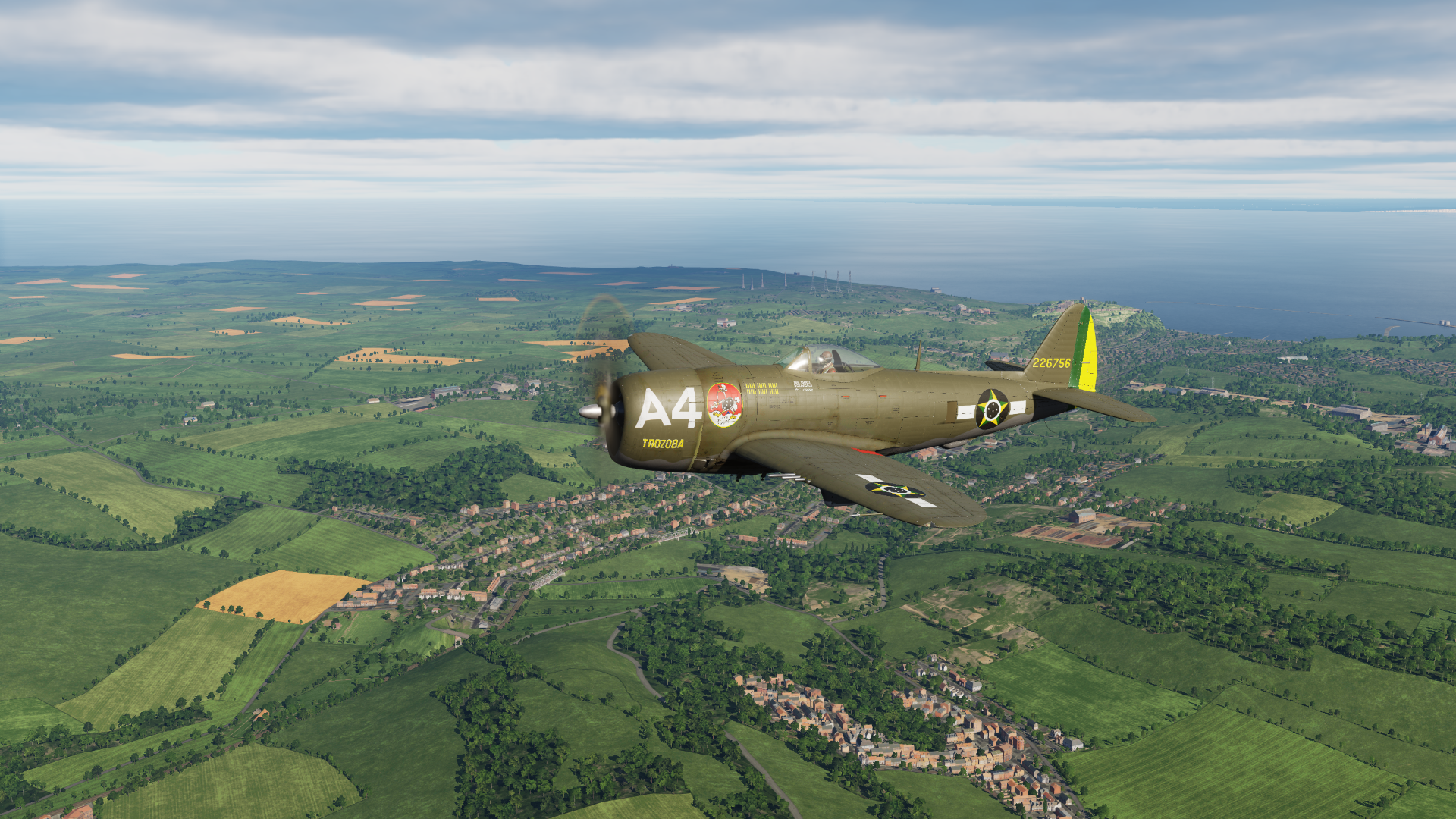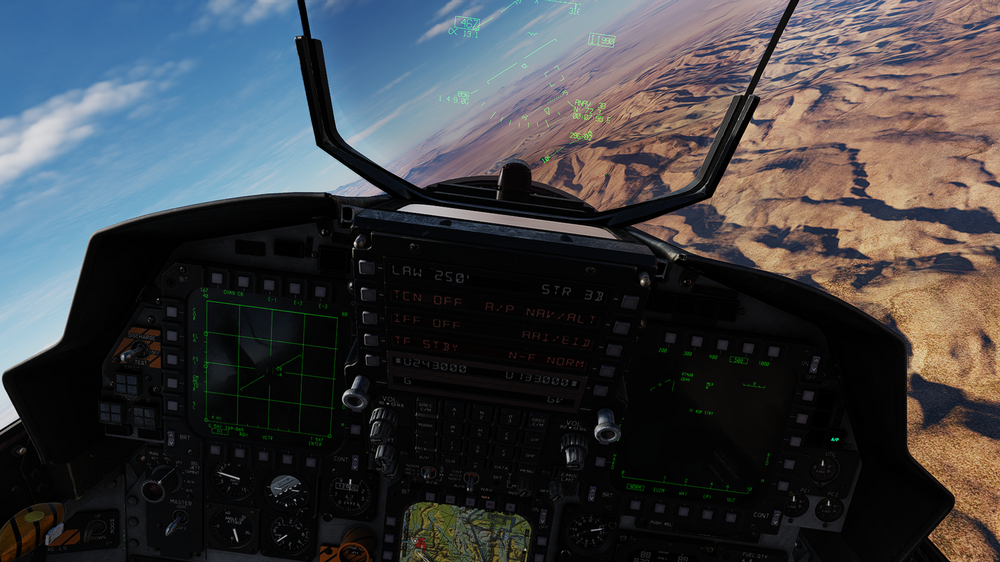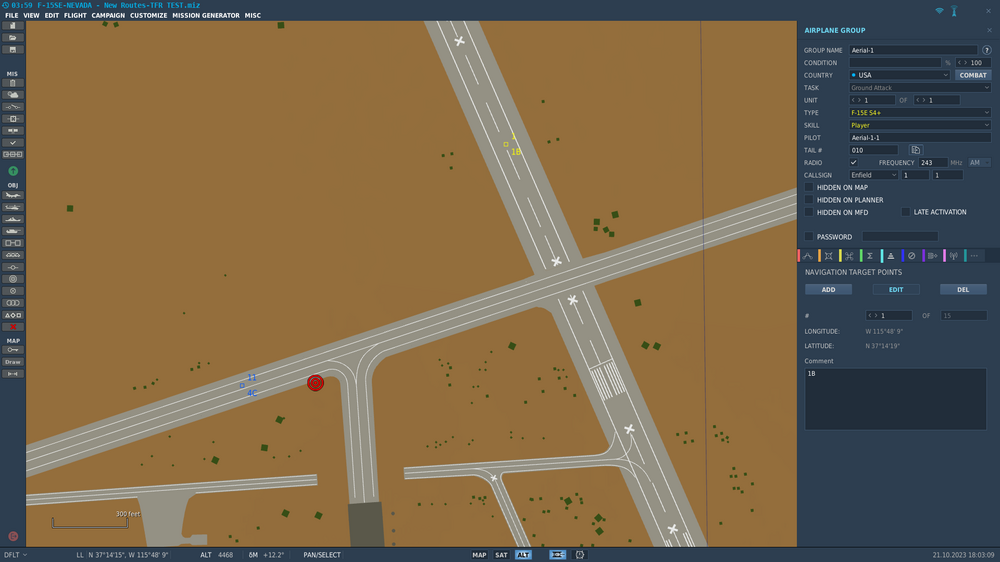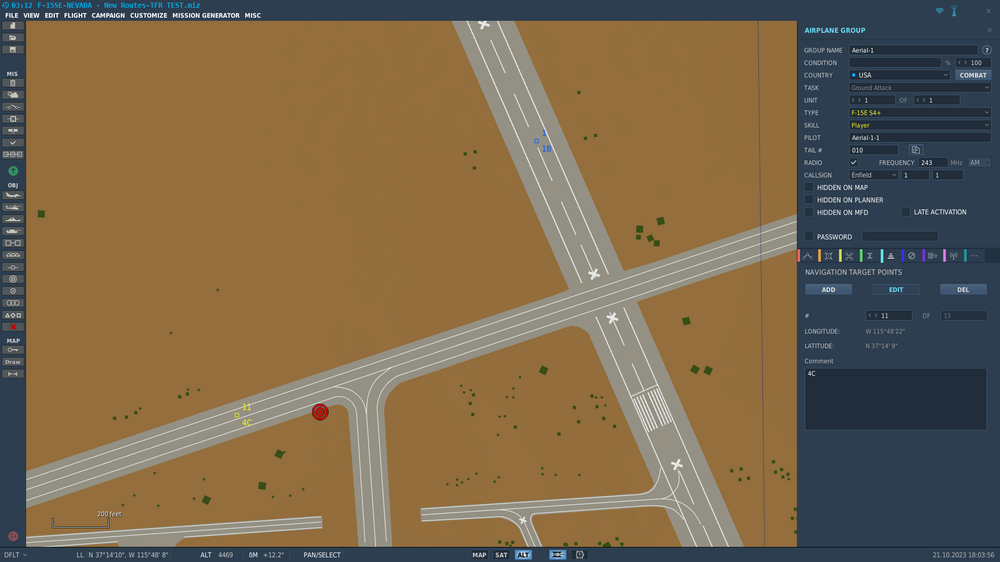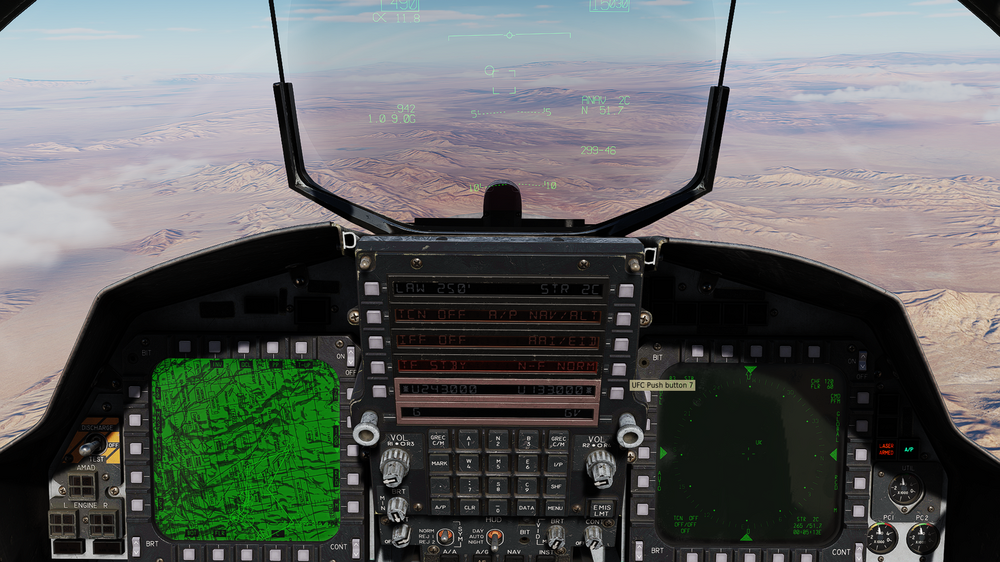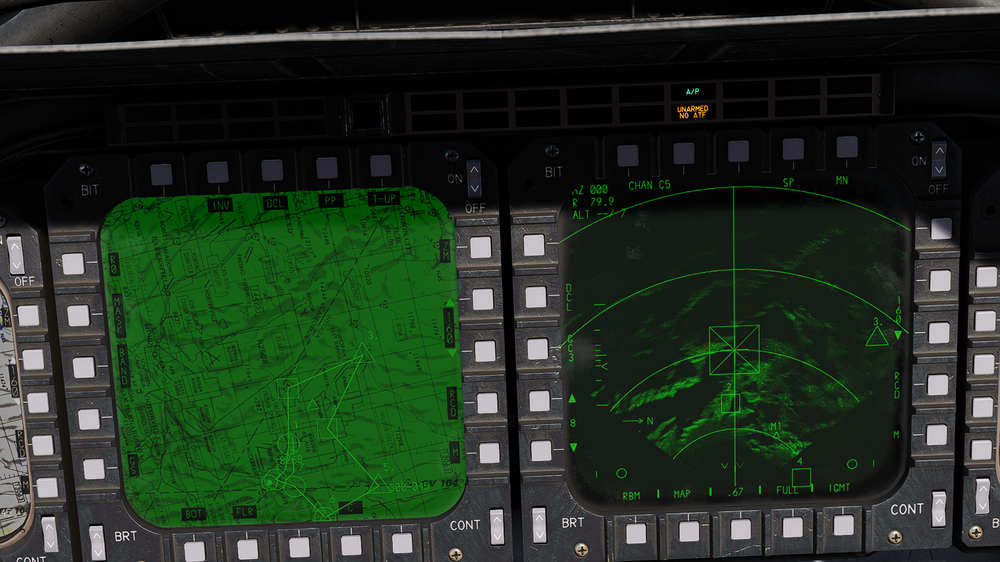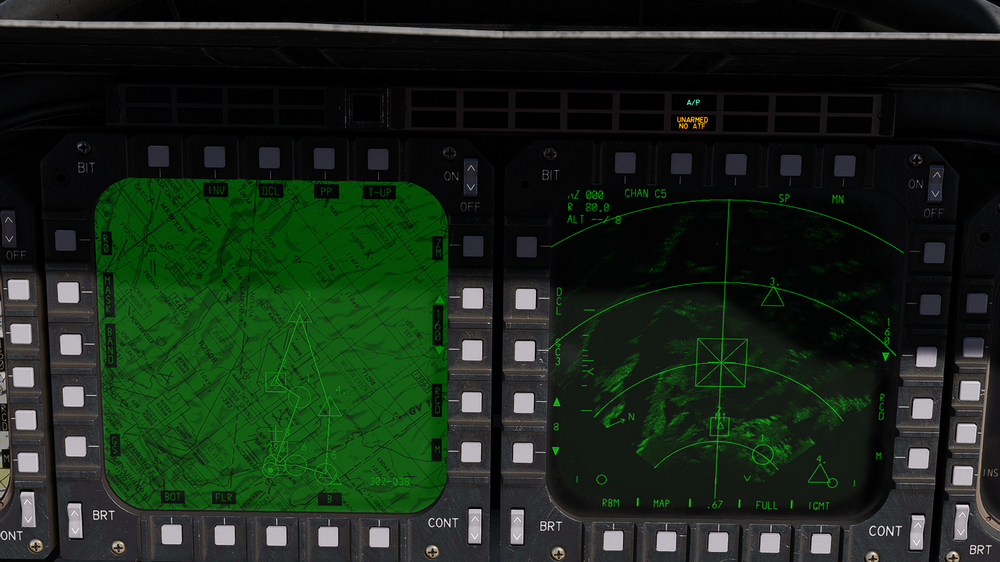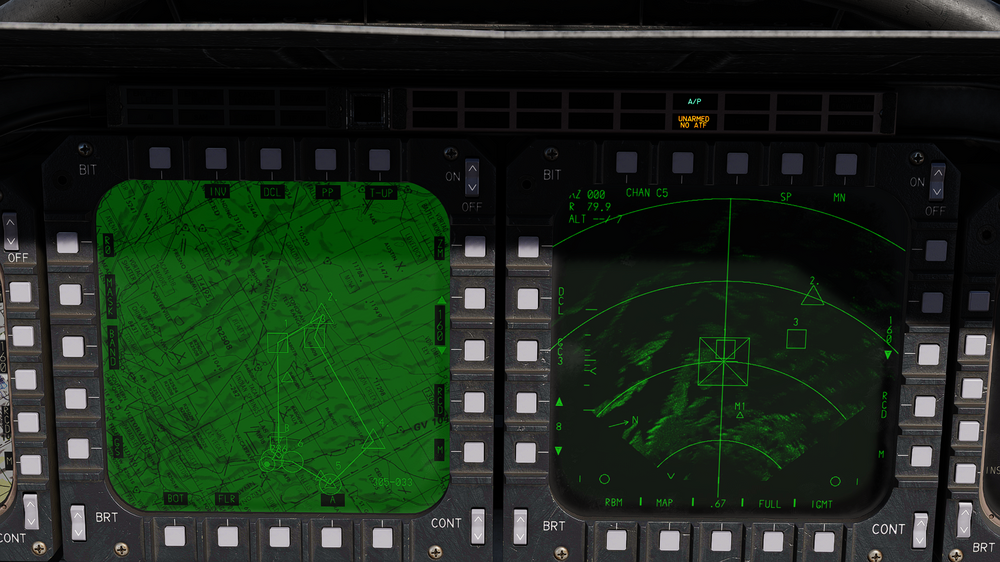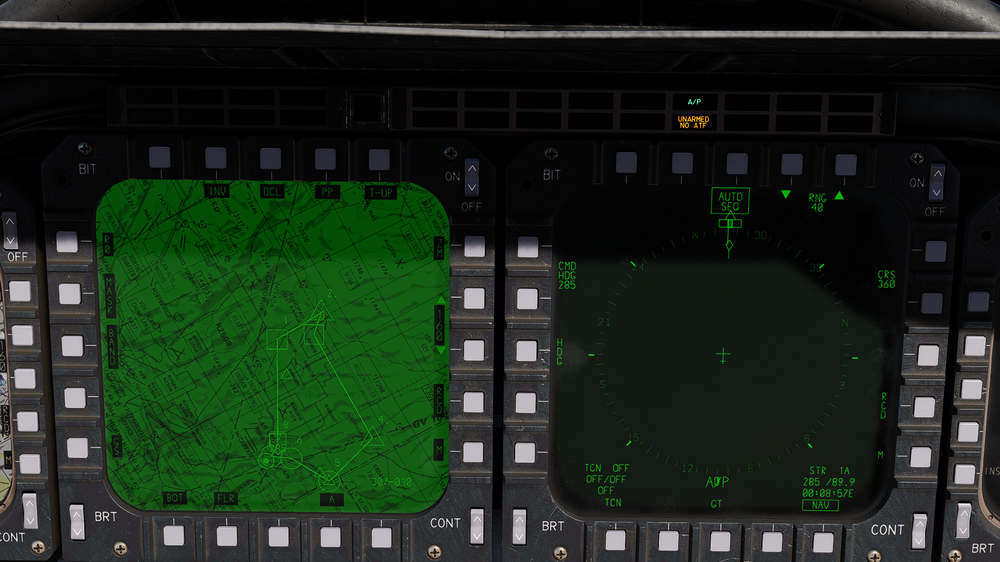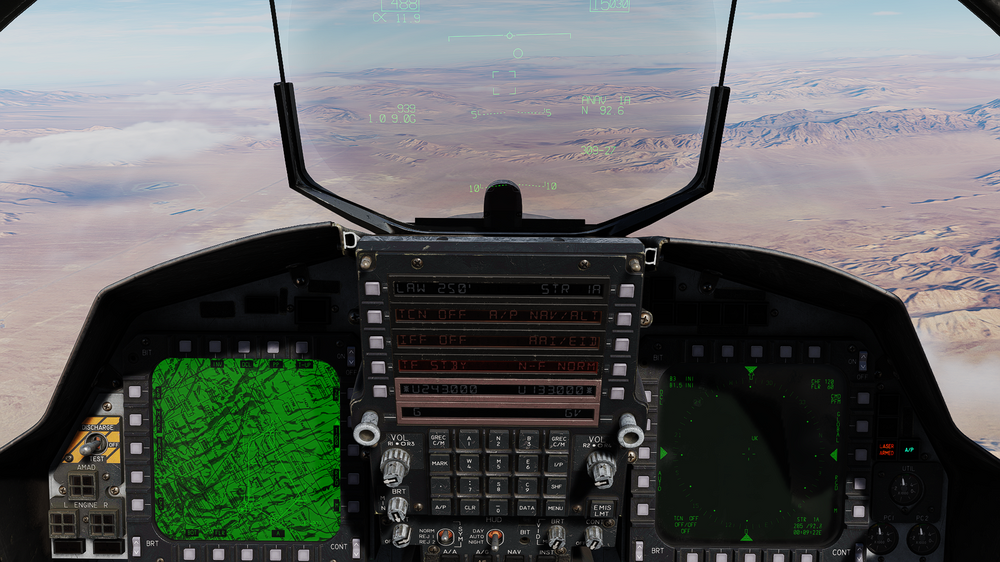-
Posts
258 -
Joined
-
Last visited
Content Type
Profiles
Forums
Events
Everything posted by SloppyDog
-
Well, it's coming in the next patch: From the Razbam Discord: Official Changelog for the December 2023 OB release: **DCS: F-15E Suite 4+ by RAZBAM Simulations. Version 1.8.1.219** Added: AGM-154A JSOW Added: Smart Weapons MC Synch Added: Full featured IFF transponder Added: Radar IFF Interrogator Modes 1/2/3/4 Added: Radar IFF AUTO ID Added: Radar IFF AAI slave mode Added: IFF Latched status displayed with cursor highlight Added: IFF Interrogation possible in RBM Added: Can stop AAI/EID with another long press Added: IFF Mode 2 code configurable in Mission Editor Added: TWS > STT retains IFF and NCTR tags Added: Other seat scratchpad display Added: Dumb bomb & CBU lofting Added: A/G RDR Cursor BullsEye coordinates Updated: All bombs have now a 30ms minimum release interval Updated: A/G RDR quickstep relatches to PB17 first Updated: BE points now allowed in A/G RDR PB17 Improved: NCTR behavior Improved: Radar IFF correlation mechanism Improved: BOT aiming significantly more accurate Improved: Low drag bombs accuracy Improved: CBU accuracy Improved: Bomb calculator wind compensation Improved: Station position accounted for in CDIP/AUTO Improved: RBM gain logic Fixed: GBU-31V3 x 2 load not showing in CFTs when selected Fixed: CBU height/time release modes not being applied Fixed: ASL issues Fixed: RCD saving all mimpap sizes Fixed: Frozen HRM patch images being lost when taking control Fixed: Jumping cursor coords & symbols in RB Fixed: A/G RDR behavior of cursor latched to an offscreen SP Fixed: UFC Wind direction TO instead of FROM Fixed: HUD laser cue not synchronised Fixed: JDAM Terminal Angle is reversed Fixed: JDAM laser code not used Fixed: TGP ALAS mode fires the laser when it is not armed
-
One thing that always gets me is the Master Mode I am at the moment: the AP works well in AG, NAV and INST master modes, although are not perfect in holding altitude. In AA master mode it does not follow waypoints nor hold altitude, and that is by design.
-
You have to bind different controls for the Pilot and the WSO. The TDC only works for the pilot. In the WSO cockpit, the Full Action function on either controller does the same functions as of the pilot's TDC. Also, in the back cockpit, the WSO controls have a few more functions than the pilot's HOTAS. And, once you are in the back cockpit, all the controls assigned to the pilot do not work. As said above, it is necessary to bind WSO own controls .
-
Around the world? Cool! Must have been quite an adventure!
-
You mean...back to the starting point? You have to pay atention to where you insert the last point in the route. If you insert it close to the starting airport and select Landing, it will move to the closest airport it finds.
-
As you were flying at medium altitude (~15,000 ft from the HUD), the system is saying you are outside Terrain Following Radar range. From page 285 of the manual: 3. NO ATF, displayed when the TF Couple Switch is in COUPLE, but the ATF is disabled (usually because the aircraft is outside the ATF limits and the system cannot re-engage)
- 1 reply
-
- 3
-

-
Well, I love your products, the care and attention to detail is amazing. I have the P-38 and I really love the Hellcat, both gorgeous MSFS. That said, more Warbirds and more Cold War for me is better. The P-38 would be a welcome addition to the fleet. And one day, oh some day, I would like to see a F-111 for DCS. Enviado de meu SM-A127M usando o Tapatalk
-
I was having the same problem. What solved for me was to specify to the type of bomb, instead of using AUTO. Mission is attached. I didn't test it after 2.9, so maybe it does not work as advertised. Wingman Attack Command TEST.miz Wingman Attack Test.miz
-
I have a i7-4700K. I see that you have a "K" CPU as well. It means they have unlocked core frequencies, to allow overcloking. In gaming, mine tries to go full throttle to better run the game, but enter in throttling since the CPU gets too hot, and the clock has to be throttled down in order to protect the CPU, but the CPU clock goes up again in order to better run the game, then goes down again, and keeps its cycle during gameplay. It results in stutters. I don't know if it is possible in newer CPUs like yours, but what solved the problem for me was undervolting the CPU. This way you tell the CPU the maximum allowed power it can go, so it runs at the maximum allowed power, that you set, all the time during the game, with almost no spikes and stutters. I run in 2D, and yes, it is working better in Single Thread than in multi-thread for me as well.
-
Did you have this problem before 2.9? Yes, the Syria map is very heavy. It's amazingly detailed, but takes a toll in game performance. This is how I solved most of the stuttering: 1) Let the map load. Yep, mission started, let it load, takes about 1 minute (yea, it sucks, I know...) 2) Check if your CPU is throttling up and down. I have a 10700K and it tries to get the best performance to run any game, so it tries to run the clock as high it can to achieve that. But the CPU reaches max temperature, so it has to throttle down in order to protect the CPU, but goes up again in order to best run the game, but has to throttle down to protect the CPU, and so on and on. It was causing lots of stutters. And was making my CPU hotter than ever. The way I solved it was by limiting the CPU power input by undervolting it. Now the CPU knows what limit it can reach, it works at the maximum established (limited) power during the game, so no more throttling, no more stutters.
-
LOL. Amazing!
-
Hey, uh... Heatblur... Sorry to bother...but what about a mustache growing contest? Whomever has the best mustache by the time the module is released, wins a free license (hint hint).
-
From the manual page 317, it is Boat Switch Forward Short. However, I tested it and it seems it only works with the AIM-9. Did not work with the AIM-120C only. But it switches from AIM-120B to -C. Not ideally what you want, as a Step switch, but is what we have for now.
-
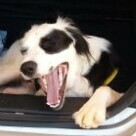
Aerodynamics, F15E sustained AOA 25deg limit (F15C had 35deg)
SloppyDog replied to xrx's topic in Bugs and Problems
Ok, I'll chime in. Don't face it as I'm trying to berate you. I am, as everybody else is, trying to help you and others. I believe, or I'm convinced of, that you bought a product expecting something and when playing/flying it got something else entirely, and it brought you a lot of frustration. So, based on that belief, I don't want to assume that you are a troll trying to have a good time at the expense of others. However, I'm assuming that you are confused by what you have on your hands and is not entirely convinced about it. So, here we go: It is clear that you are a big fan of the F-15C, and I believe that you expected the F-15E to be a full fidelity version of the F-15C. As many stated here, and in other topics, they are not the same aircraft. Not at all. The F-15C was designed to counter the Mig-25. Big, powerful, air superiority fighter. The F-15E, on the other hand, was designed to replace the aging F-111. Low-level penetrator/interdiction/strike aircraft. Totally different mission sets. Yes, they look alike. Yes, the F-15E can carry air-to-air missiles and a has a powerful radar. And that where the similarities end. I strongly recommend that you read the companion book to the F-15E: "Be Afraid of the Dark". It can be found on your Doc folder inside the F-15E main folder. In there you will have lots of information about what the F-15E is and how it become to be. I'm reading it and it is a great book. About the performance of the -E compared to the -C, don't take my word for it. Below is the transcript of the book, from the test pilots flying it: Page 23, second and third column: "We also wanted to look at the CFTs to see what aerodynamic penalties we would pay for carrying them. Did they put us at a big disadvantage in the air-to-air arena? So, we flew air-to-air against as many types of adversary as we could. We did what I would call VHNs – Very Heavy Nose – where you have just come off a tanker and are full of gas. We then reduced the weight to a half fighting load and then further reduced it to an ideal fighting weight. We had never flown this heavy before and I wanted to see what would happen when we did.” Page 23, end of third column, and Page 24: "When we flew the air-to-air portion of the tests in a VHN condition it did not perform like the C model – it couldn’t, it was just too heavy. Once down to a half fuel load though, it would start to fly like a C or D model." -
Oh sorry. In order to latch the view in place, you first press RCrtl+Num0. wait a moment, then press Num3. Now you can manipulate the TACAN controls. Same works for other views like screens or radios. Once you enter RCrtl+Num0, you can change the views by pressing Num1 to Num 9. To move out of the views press Rcrtl+Num0 again or just Num0.
-
Use Numpad 0 + NumPad 3. You can also make your own custom views
-
I believe BradMick was refering to this: He is one of ED's SMEs and his videos on the Apache are invaluable.
-
@KlarSnow thank you. This is really a great feature.
-
Unfortunately, couldn't find anything by making a search on the internet either. I assume they work similar to the Hazard points in the Apache.
-
EDIT: Put together all the information, including @KlarSnow invaluable help. Works like this: 1) Create your route, as normally is done: these will be points 1A, 2A, etc. 2) In order to create alternative routes you create a new Nav Point in the Navigation Points Section and name them 1B, 2B, 3B, etc... Or you can name them 1C, 2C, 3C... it doesn't matter the sequence, i.e., you can create a point 1B then a 2B, or a 1B then a 1C, it works the same. 3) The alternate routes will not appear on the ME, but once you are in the jet and on the TSD page, press the the squared A at the bottom of the screen and you will see the alternative routes (B or C). 4) In order to create Target Points or transform a waypoint into a Target point do as follows: For the main route (A) add a #T before the point: Example Waypoint 2 will be written as #T2 in the waypoint name window. For the alternate routes (B and C) add a dot after the waypoint number as 2B., 3B., 2C., 3C., etc. To create offset points for these points you write them as 2.01B, 2.02B, 3.01B, 3.02B... 2.01C, 3.01C, etc. 5) You can also add Markpoints, by adding a navigation Point and labeling it M1, M2, M3... They show up on the TSD and Radar pages as small triangles. 6) The radar can show the alternate routes points on the screen, but in order for them to be shown the route has to be changed in the UFC first. 7) You can also add a Base point for airstarts by creating a point simply labelled B. Attached is a mission I made to test/show the alternate routes feature. F-15SE-NEVADA - New Routes-TFR TEST.miz
-
Well, this one went below the radar (pun intended): If you add a route, and then additional Navigation Target Points with names as 1B, 2B, 3B...1C, 2C, 3 C... the additional routes will appear on the TSD, UFC and HUD. The Auto Pilot does not steer automatically to them as soon as you select the new routes in the UFC (By pressing 1A, 2A...1B, 2B, etc.). Unless you find yourself in the general direction of the selected point in the new route, then the A/P will steer to it. Very nice feature! Thanks Ed and RAZBAM! F-15SE-NEVADA - New Routes-TFR TEST.miz
-
The title in the Special Tab for the Harrier is wrong. It shows the name as being the F-15. A minor, minor bug, but nevertheless...
-
- 1
-

-
Yep, old stuff is nice to fly. I have the PMDG 737 and the DC-6. The 737 is ok, was good to quench my curiosity for new, modern airlines, but what you do is just fly the route, align with the ILS and land. The DC-6 gives a greater challenge, since it is manual and you have to be on top of those engines.
-
It depends heavily on the developer. Flying Iron and Got Friends are the benchmark now for WWII planes. Modern jets I would go with IndiaFoxtEcho. All the others are purely deception. There are lots of reviews of MSFS aircraft on YouTube, if you have any questions about a certain plane, it is probable that someone somewhere already reviewed it. I do have Flying Iron's P-38 and Hellcat and both are amazing. Also have Milviz Corsair but it was pure disappointment. Like @Gunfreak stated: there is no curation or care from MS or Asobo to what is sold and run on their platform. Anything goes. It is up to the customer to search and know what they are investing their money and time on. Also, as @Art-J said, in MSFS they don't need to be that detailed. In DCS, on the other hand, taking from many sources, the developer must reach some standards: 1) have the documentation, 2) making sure that said documents are not classified (or at least not classified beyond a certain point), 3) having a decent 3d model, 4) having a decent systems model (ED's or proprietary), 5) having the commitment to maintain the product up-to-date with ED's new software. That takes time. An average time from a DCS module announcement to release (in early access) takes about 5 years. And companies like Flying Iron's do take their time to make things for MSFS too, because they have this concern to make a good product. Others churn out so many WWII aircraft because they just port FSX/P3D old models into the new game, add a new cockpit (or worse, use the cockpit of some default aircraft), slap a price tag on it and sell. It is a wild jungle out there in the Marketplace.

